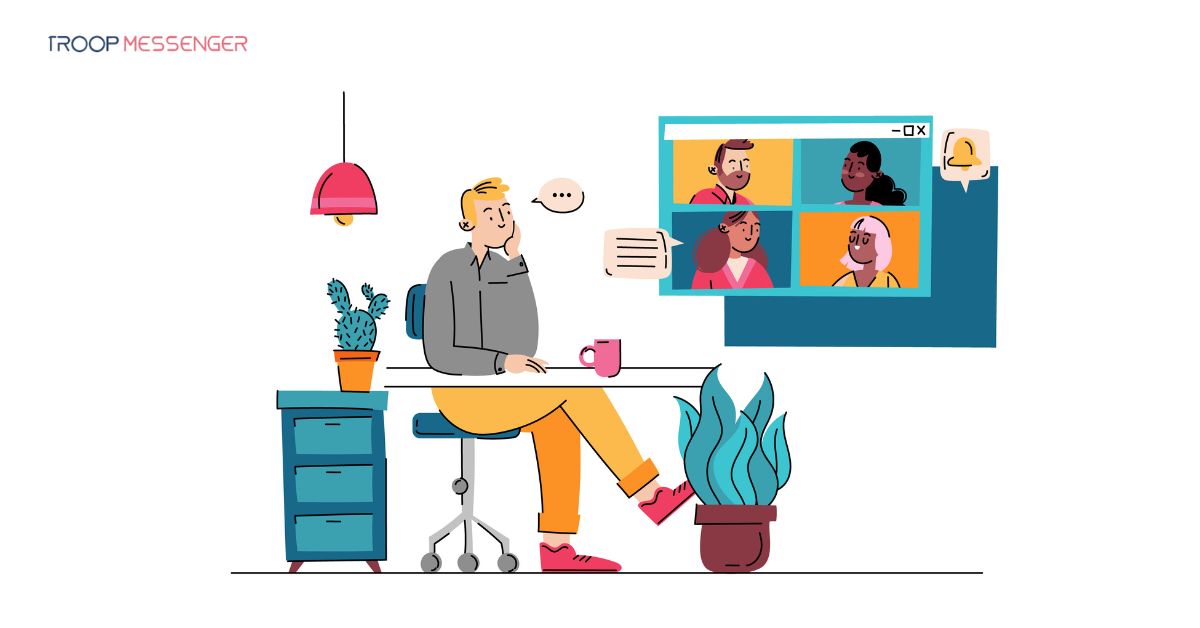Connect with us

Employee Onboarding in Remote Teams: Digital Training Solutions
Today's digital environment makes remote work an integral component of many companies' strategies and policies. The COVID-19 pandemic and its consequent global shift toward remote workforces have highlighted that traditional employee onboarding practices, such as face-to-face interactions or physical materials, no longer hold relevance for modern employers. Effective employee onboarding for companies with distributed teams has expanded over time to encompass innovative digital solutions to ensure new hires feel welcome, informed, and empowered regardless of working remotely. Platforms like SpeedyPaper that provide quick and dependable document creation/editing can simplify onboarding materials creation so that HR departments can focus on providing more engaging remote onboarding experiences for their new hires.
Employee onboarding is one of the key stages in an employee's journey at any organization, helping new hires understand their roles and responsibilities while simultaneously familiarizing them with company culture, values and tools they'll need for success. When working remotely these elements must be effectively conveyed through digital training solutions. We will explore here how remote teams can use digital training platforms to deliver engaging onboarding experiences that are efficient yet impactful.
Effective Onboarding in Remote Teams
Effective onboarding is central to employee retention, productivity, and satisfaction. Studies show that employees who go through an effective onboarding process are 58% more likely to remain with their current company after three years compared with those who don't receive such guidance. Remote teams highlight this importance even further - new hires don't benefit from in-person interactions that help foster relationships, collaboration, and an overall sense of belonging that could facilitate more rapid onboarding processes in person.
Remote employee onboarding aims to offer newcomers an effortless, welcoming, and informative experience that fosters integration within teams and company cultures - even while working remotely - while remaining professional and compliant with any relevant regulations or protocols. This goal can be reached using digital tools, communication channels, and a practical training procedure.
Key Components of Remote Employee Onboarding
Effective remote onboarding involves various elements that can all be delivered digitally.
Preboarding occurs as soon as an employee accepts their job offer and culminates on their first official day with the company. Preboarding may include digitized forms that set the tone for onboarding to come - this phase serves to establish an easy transition into their role at your organization.
Remote employees need the proper equipment in order to start work successfully - be it a laptop, headset, or specific software application. Digital platforms like ‘Expensify’ or ‘BambooHR’ may help track equipment requests and deliveries more easily.
Create and grant access to essential digital tools, like Slack, Microsoft Teams, Zoom, and HR platforms like Zoom, as well as project management platforms such as Asana or Trello. A central platform, like ‘Okta’ can make accessing these essential services seamless and streamlined.
Send employees digital handbooks or policy documents via digital signature platforms like DocuSign’ for easy receipt confirmation by new hires.
Orientation of Company Culture and Values
Once preboarding has concluded, orientation begins. Here, newly hired employees are introduced to the values, culture, and goals of their new company; it's an especially crucial step when working remotely - creating an invaluable sense of connection among colleagues despite distance. Companies may utilize digital tools in this phase as an additional method to engage new hires in productive ways.
Utilize tools such as ‘Loom’, ‘Zoom’ or ‘Vimeo’ to record videos or host live sessions where senior leaders or HR staff explain the company's mission, values, and vision.
Give employees an opportunity to complete a digital module that details your company's core values, ethics, and history. TalentLMS and Thinkific are great resources for creating online learning modules they can complete at their own pace.
Remote work can often feel isolating, which is why it is crucial that new hires connect quickly with their teammates as soon as they begin work. Hold virtual "meet and greets" using video conferencing software such as Zoom or Google Meet to facilitate initial interactions among team members and encourage team leaders to schedule individual conversations between new employees to foster personal bonds between themselves and newcomers.
Role-Specific Training
After their orientation phase has been completed, new hires should dive headfirst into role-specific training. Remote workers require a thorough understanding of their responsibilities, workflows, and performance expectations - digital training tools provide interactive and tailored learning experiences that facilitate this crucial part of employee onboarding.
Platforms such as Moodle, Canvas, or SAP Litmos serve as central storage facilities for training materials. They host online e-learning courses and quizzes designed to train new hires on tools and processes and to help them understand their job duties.
Employees in certain roles could benefit from digital simulations or virtual environments in which to practice tasks and scenarios, like WalkMe or TalentCards that guide employees through real-life simulations related to their roles - this may prove especially valuable in customer service or tech support roles.
Provide resources that explain the tools and software employees will be expected to use in their roles, like Dropbox or Google Drive for sharing user manuals, troubleshooting guides, or any other essential documents that need storing or sharing with employees.
Mentoring and Ongoing Support
Mentorship programs are an integral component of remote onboarding, helping new hires settle in smoothly during their first months with us. Establishing digital mentorship programs offers new employees guidance from more seasoned colleagues while forging new relationships between themselves.
WorkBright or Hivebrite provides the ability to assign mentors who will assist new hires by offering regular check-ins, feedback, and guidance.
Schedule weekly or biweekly check-ins between managers or HR and employees to review progress, address queries or address concerns, as well as monitor employee engagement during onboarding processes such as 15Five or Officevibe. These tools offer platforms for measuring employee satisfaction during this phase.
Encourage employees to provide feedback about the onboarding experience for future improvements. Surveys sent via platforms like ‘SurveyMonkey’ or ‘Typeform’ allow HR departments to gather insights, collect responses, and adjust training materials accordingly.
Onboarding Tools for Remote Employees
As companies look for tools that will simplify remote team onboarding processes, let's examine some of the more popular and effective digital tools they should incorporate in their onboarding workflows.
As noted above, Learning Management Systems (LMSs), such as Moodle, TalentLMS, and SAP Litmos, are indispensable platforms for providing structured yet interactive training content to remote employees. By centrally hosting courses, certifications, and learning resources in one convenient place on these LMSs, these learning platforms allow employees to work at their own pace toward completion.
Communication is at the core of remote work environments, and tools like Zoom, Slack and Microsoft Teams make it easier for teams to stay in contact. Video-conferencing platforms such as Zoom are particularly beneficial when onboarding new employees as they enable HR departments, managers, and new workers to meet virtually face-to-face and engage in real-time discussion sessions.
Onboarding involves much paperwork; to streamline this process more quickly and effectively for remote teams, tools such as DocuSign, HelloSign, or Adobe Sign can make this task simpler and quicker. These platforms enable the digital signing of contracts or forms facilitating faster onboarding processes with greater efficiency.
As remote teams don't provide employees with face-to-face interactions that help employees feel engaged, employee engagement tools such as 15Five, Trello, or Asana can ensure employees remain connected and motivated. Furthermore, these platforms also assist with tracking performance data, managing projects efficiently, and setting goals.
Project management tools such as Trello, Asana, and Monday.com are essential for remote teams. Employees use them to track tasks, deadlines, and collaborative schedules as well as give managers an overview of employee progress.
Onboarding platforms designed specifically to facilitate remote onboarding processes exist to facilitate this transition, with WorkBright offering document and employee compliance management, while BambooHR features tools for employee record and performance tracking management. Both solutions integrate with HR and project management software systems for an ideal onboarding experience.
Tips for Employee Onboarding in Remote Locations
Digital tools may play an essential role in onboarding remote employees successfully; however, their success ultimately hinges on their execution. Below are some best practices that will ensure a positive remote onboarding experience.
Each employee has different learning preferences; therefore a one-size-fits-all approach will never satisfy everyone. Make the onboarding experience unique and engaging for every new hire by customizing training to their role and background. Use data analysis techniques to gain an understanding of learning preferences so materials can be adjusted appropriately.
A practical remote onboarding experience requires having a clearly outlined timeline, including key milestones and tasks for employees to accomplish during their first few weeks with us. A structured schedule helps minimize confusion while keeping employees on schedule.
While remote employees might not interact directly, building social connections among them still pays dividends. Host virtual ice-breaker sessions, lunch-and-learns, or happy hours in order to help new hires connect on an intimate level with colleagues and feel welcomed into your organization.
Continuous feedback is of vital importance in remote teams. Regular check-ins between managers or mentors and new employees allow managers to provide guidance, answer their queries, and ensure employees feel supported during their onboarding journeys.
Onboarding remote employees presents unique challenges; however, by employing digital training solutions and best practices effectively, companies can create an engaging and successful onboarding experience for new hires. Tools like LMS platforms, video conferencing apps, communication apps, and project management software enable remote teams to ensure newcomers feel completely equipped, confident, and integrated into the organization - as well as create personalized, structured digital onboarding experiences that create strong, motivated teams that contribute toward the long-term success of companies.








